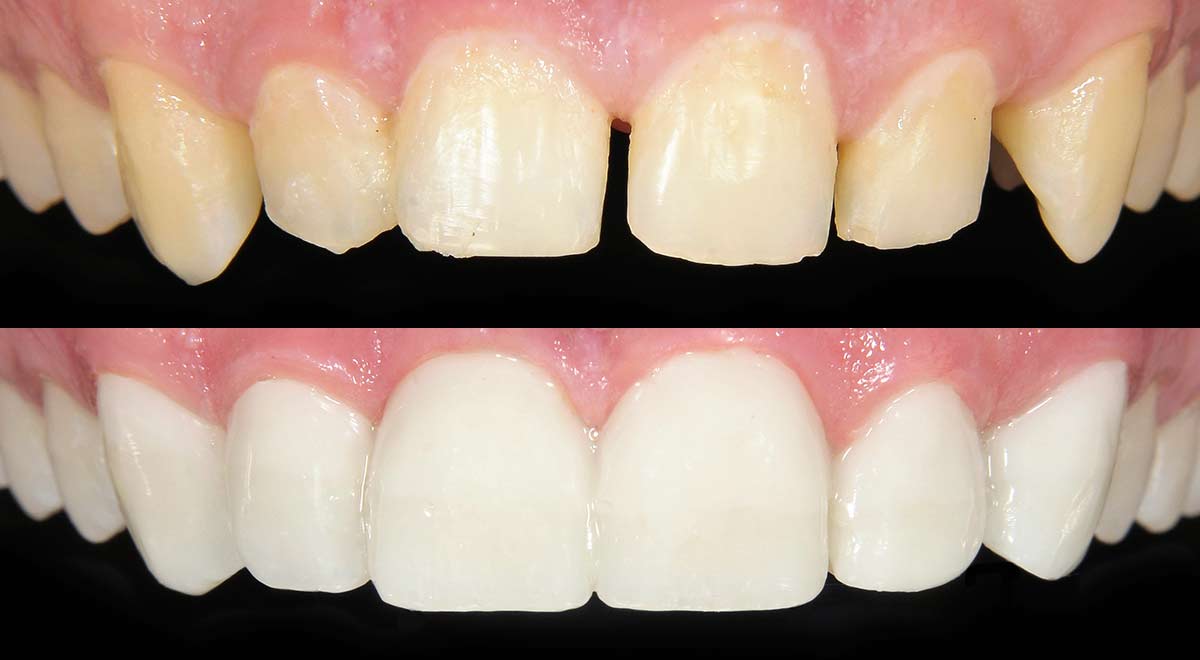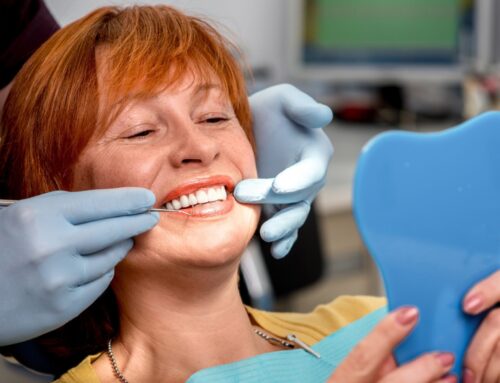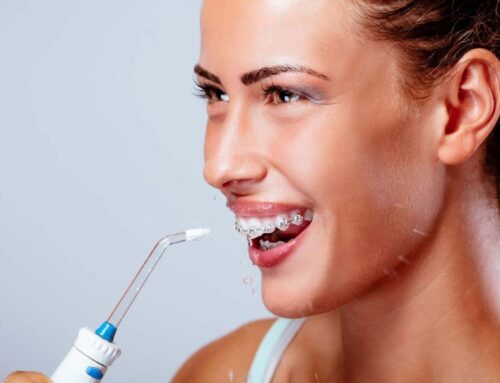Repairing Damaged, Chipped, and Discoloured Teeth
Accidents happen. It’s unfortunate, but true. When an accidental impact or fall leaves you with a damaged or chipped tooth, you’ll probably start to wonder exactly what your dentist might be able to do about it to get your smile back to normal.
Well, you’ll definitely be glad to hear that there are indeed methods available that can be used by your dentist in order to help repair your damaged tooth, and one of the most common, effective, and popular ways to do this is with a process known as dental bonding.
What is Dental Bonding?
In simplest terms, dental bonding is the process of using a tooth-coloured filling material on the tooth to repair small areas of damage or discolouration. Dental bonding is a safe, proven method of tooth repair that is used by dentists all over the world to solve a wide variety of cosmetic dental problems.
What Types of Dental Problems can Bonding Solve?
There are many different situations where dental bonding can provide an effective solution for patients. Most commonly, dental bonding is used to repair small areas of physical damage on teeth such as chips, scratches, gouges, or other types of recesses and irregularities in the surface of a tooth. These areas of damage can be caused by a variety of factors, including sudden impacts to the mouth, biting down on a particularly hard object, tooth grinding, or other types of physical abrasions or stresses.
Dental bonding is also a potential solution to teeth that have been discoloured or stained for a variety of reasons. The resulting mottled appearance of the teeth or inconsistent colouring may not always be easily solved by other tooth whitening options, and so dental bonding may be considered as a corrective measure.
Finally, dental bonding can also be an effective solution for reducing gaps between teeth. For patients with minor gaps who don’t want to undergo a full orthodontic treatment procedure with braces, dental bonding can minimize the spaces between teeth in a way that is easy and looks very natural.
How Does Dental Bonding Work?
The process of dental bonding is really quite simple, consisting of just a few steps to go from a damaged tooth to a fully-repaired tooth in as little as a single treatment session. In fact, most cases of dental bonding treatments won’t even require numbing or anesthetic.
First, your dentist will conduct a thorough dental exam to closely inspect the damaged tooth or teeth, as well as any other potential areas of concern that may need to be addressed. This may include the need for a dental x-ray to ensure 100% clarity in to the current state of your dental health and the suitability of bonding as a treatment option.
Once your dentist has determined the full extent of the damage to repair, they will prepare the surface of the tooth to be fixed with an in-depth cleaning. Now that the tooth is clean, the surface of the tooth will be ‘etched’ using a special gel or liquid in order to create a surface that will adhere most effectively to the bonding material.
The dentist then applies a strong dental adhesive to the repair area, followed by a special tooth-coloured resin that has been precisely matched to your natural tooth colour. This resin is then hardened, or ‘cured’, using either an ultraviolet light or a laser.
Once cured, the dental bonding material can then be polished to a high shine so that it appears identical to the surface of your natural tooth enamel. In most cases, a single tooth repair using dental bonding takes approximately one hour from start to finish. For multiple teeth or more extensive repairs, your dentist may need to conduct the treatment over the course of more than one visit.
What’s the Difference Between Bonding and Veneers?
While similar in purpose, there are many differences between dental bonding and dental veneers. While bonding is applied as a shape-able material and then hardened, veneers are essentially an entirely new surface for the whole tooth that is adhered as a single piece. Veneers are a good way to cover an entire tooth, whereas bonding is generally used for smaller areas and those instances that don’t require the entire tooth to be completely covered.
If you’re not sure about whether bonding or veneers are the best choice for your particular situation, have a discussion with your dentist about your goals and they will guide you down the correct path for optimum results.
How Long Does Dental Bonding Last?
Once fully cured, the dental bonding material is extremely durable and lasts for 8-10 years on average. However, it should be noted that even the advanced materials used in dental bonding are not as strong as your natural teeth, and so patients with bonded teeth must take extra care to ensure the best results for the longest period of time.
How Do I Care for Bonded Teeth?
Caring for teeth that have been repaired using dental bonding is fairly simple, and the majority of your normal oral care habits will still be necessary. Brushing, flossing, and oral rinses are all essential habits that will help you properly care for your teeth, but there are also a few things to keep in mind about bonded teeth.
You’ll want to minimize and avoid the consumption of foods and drinks that are known to cause staining and discoloration of tooth enamel. Their staining effects could also occur on the material used in dental bonding. Smoking is also a habit that should be stopped entirely for the multitude of negative health consequences that it brings, which includes the staining and discolouration of the teeth.
It’s important to note that dental bonding material cannot be whitened like natural tooth enamel. In the even that you choose to whiten your teeth after you’ve had bonding treatment, you may end up with uneven colouration of your teeth. To remedy this, you would need to undergo a dental bonding re-treatment to once again match the colour of your natural teeth.
Naturally, regular dental checkups and hygiene treatments should be maintained as well. During these checkups, your dentist will closely inspect the bonded teeth as part of the appointment and monitor the status of the repair. In the event that additional repairs are needed, your dentist will arrange your treatment as soon as possible to maintain your quality of oral health and avoid further problems down the road.
For additional protection of bonded teeth, you may want to invest in a night mouthguard that will help minimize the wear of the bonding material. This is especially important for anyone who has a tendency to grind or clench their teeth during the night. Your dentist can have a custom night mouthguard made for you that will be a perfect fit for your teeth and make sure you get the most out of your dental bonding repairs.
Repair the Damage & Get Your Smile Back with Dental Bonding
If you’ve recently suffered an accident that resulted in a chipped or damaged tooth, or perhaps you’ve had a dental irregularity since you were young and have always wanted to fix, then dental bonding may be a great way to get your smile looking perfect again.
To have your questions answered, or to book an appointment for a free, no-obligation consultation, contact the team at Georgian Dental® today. Our professionals will be glad to offer you advice on the best solutions for your dental health needs.
Appointment Request
If you’re interested in any of our procedures, and would like to meet with one of our dentists to discuss options, costs and get additional information, complete this short form and we’ll give you a call to arrange for a no-obligation appointment at our Barrie clinic.









